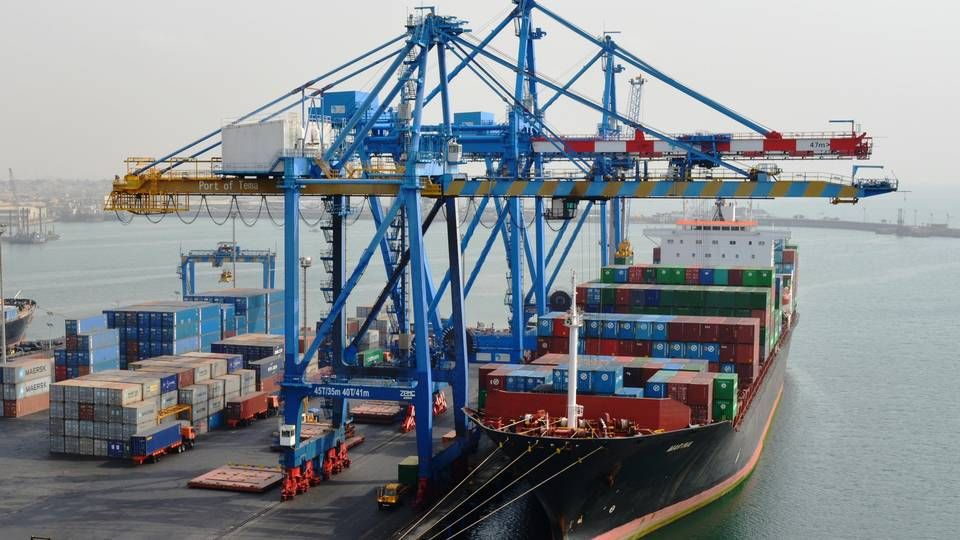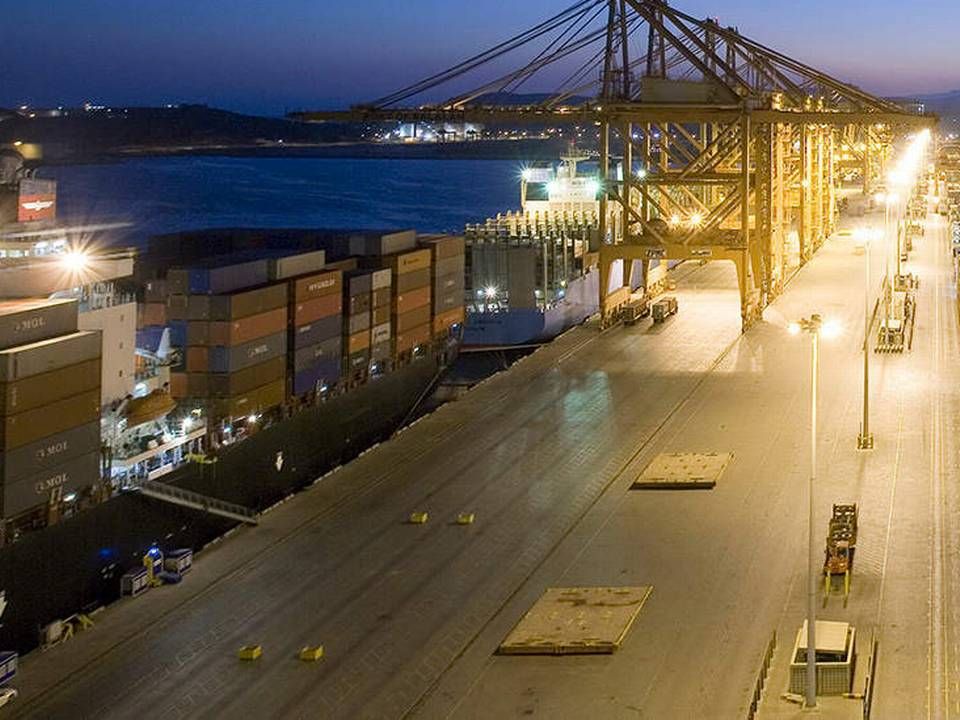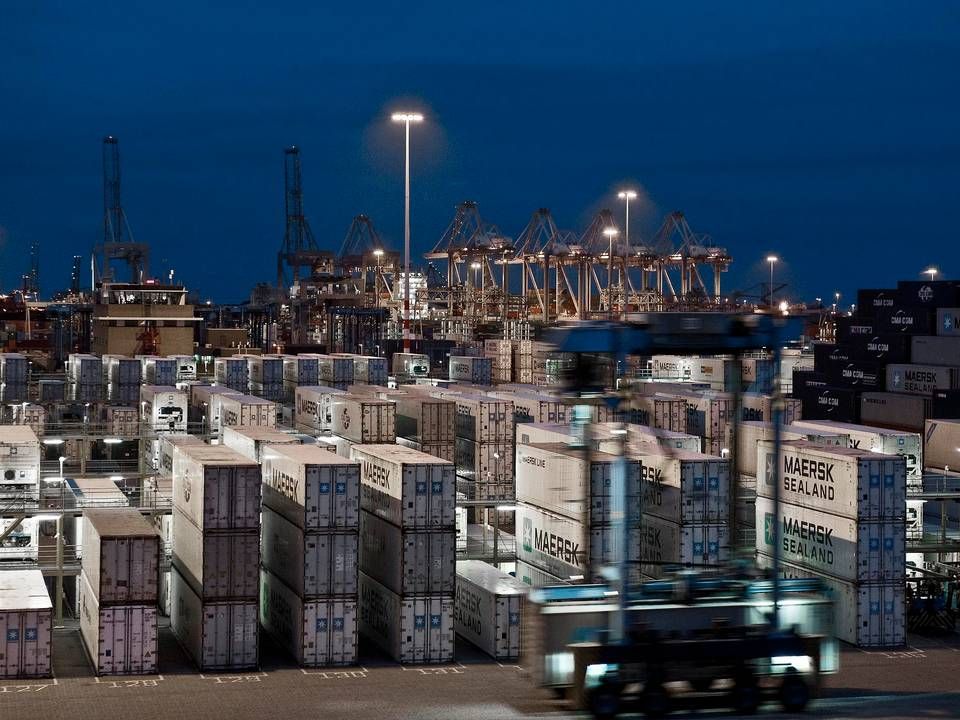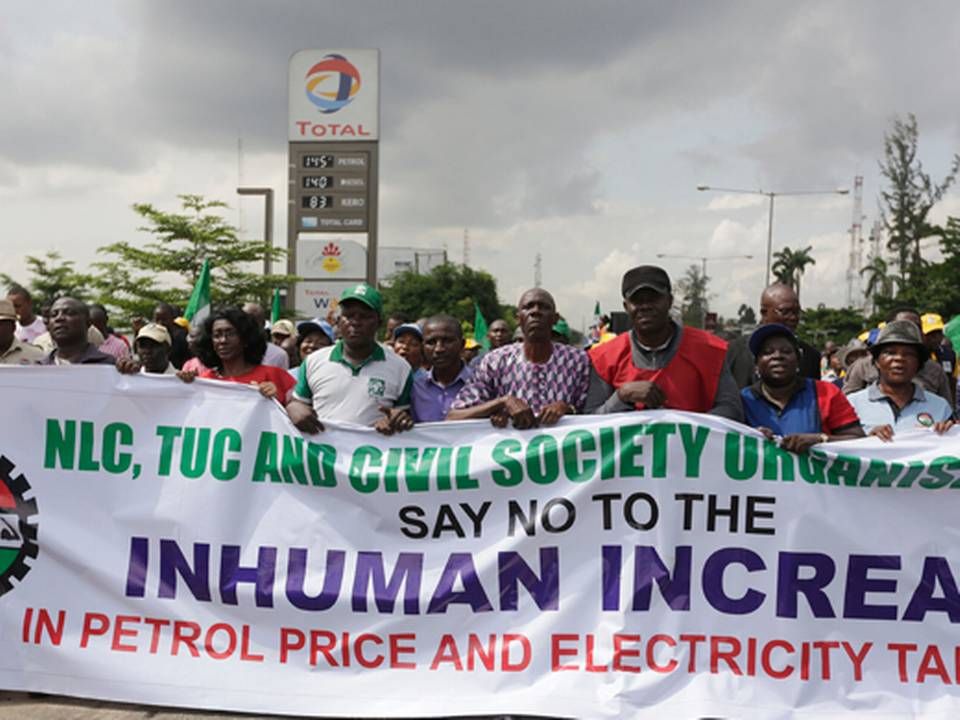Foundation crumbling under APMT's prestigious African project

Several unpleasant tasks await Morten Engelstoft, who took over the job as CEO of Maersk Group's APM Terminals a few weeks ago from Kim Fejfer.
One of these issues is the prestigious project in Badagry, Nigeria. This project was launched in 2012 as what would be the largest port on the continent of Africa. In 2016, the first phase was supposed to be ready to service the country, where the economy was booming at the time. That did not happen and APM's enthusiasm to get the ball rolling has diminished along with the vanishing prospect of major growth in Nigeria.
Today, the justification for the Badagry project simply no longer exists, several sources tell ShippingWatch after three Nigerian ministers stated this summer to Nigerian media that APM had been selected to head the construction and the operations of the port of 1,100 hectares. A project, which according to Nigeria's minister of transport, Rotimi Amaechi, will provide the country with USD 2.5 billion in investments from the private sector.
The prospects for Nigeria and the surrounding region did indeed look promising when APM Terminals announced its plans for Badagry back in 2012, where growth was at six to seven percent, and there was no indication that the blossoming economy would start to wither. However, since then, growth has declined for Nigeria's most vital trade partner, China. The price has declined for Nigeria's most important export, oil. And authorities have their hands full dealing with rebel groups such as Boko Haram in the north and Niger Delta Avengers in the south.
APM Terminals cleared for construction of Africa's biggest terminal
At the end of 2015, Nigeria's growth had dropped to three percent.
"Today one ought to wait and see what happens in terms of an investment such as Badagry. Following the latest crisis, Africa – and West Africa in particular – is not what it was expected to become," Michel Donner, senior consultant at Drewry, tells ShippingWatch.
The same assessment has been voiced by an anonymous source with knowledge about terminal projects in Africa.
"The market has declined by 20-40 percent and this has made a big dent in investment models. So, before you could work hard to get everything settled, but now you want to delay investments a few years before starting," the source tells ShippingWatch.
After the statement from the Nigerian government this summer, APM Terminals expressed gratitude for the vote of confidence. Since then, the terminal company has declined to comment on the Badagry project in spite of repeated inquiries from ShippingWatch, just as there have been no confirmations or denials as to whether or not a concession deal has been signed.
New port needed
But there is a lot to suggest that the Badagry project still makes sense in the long term. Growth may not be what it was four years ago, however, signs indicate that the Nigerian population – thus consumption – will grow. And the existing Apapa port in the middle of the capital Lagos is reaching its capacity limit.
Nigeria is already the most densely populated country in Africa with a population of 186 million. The UN estimates that Nigeria's population will surpass that of the US by 2050 and that in 2100, there will be more than 750 million Nigerians.
Lagos itself is also in the midst of a growth spurt. The city has grown from 1.4 million inhabitants in 1970 to more than 20 million today, and despite Chinese investments in railroads, there are massive problems getting containers through the traffic and out of the big city. The waterway into Apapa also leaves a good deal to be desired. Apapa is located in the Lagos lagoon, to which access is only possible through a strait which is known for sanding up. Despite several attempts to dredge the strait, it does not provide access for container ships of more than 5,000 teu.
As such, there is a need for a more efficient method to secure supplies to the many Nigerians, explains Donner. Badagry lies 50 km to the west of Lagos with direct access to the sea and the port will have a depth of 18 meters enabling it to take in Triple-E vessels.
Competing project
There is, however, a problem in the fact that a similar project is already underway just 20 km east of Lagos. Here lies Lekki where the Manila-based operator ITCSI already has the paperwork for a 21-year concession. ICTSI has also declined to comment to ShippingWatch on the prospects for the investment, but informs briefly that the terminal construction will begin at the end of 2016. According to Donner, Badagry and Lekki each represent fine projects, but he is skeptical about whether they can both be justified at this time.
"It all depends on timing. Today perhaps one of the two terminals could be justified with a slow upstart, and I think APM Terminals as well as ICTSI are both now looking into how best to phase in the projects little by little," he says, adding that he is completely confident that the investments will become profitable over time.
Although the current downturn is not decisive for the very long term, it does hold significance for those making investments now, says one source. If Badagry is built before there is an actual demand for the extra volume, this will impact market shares in the region. Where it normally takes ten or more years from the beginning of construction to earn back the investment in this type of project, it might take an additional ten to make up for losses, if the first three or four years of the project's life see weaker rates than anticipated.
"Then you have to control supply and demand. That's why the pace has been slowed down now," says the source.
Uncertain timeline
None of the sources with whom ShippingWatch has spoken dare venture guesses about the timeframe for Badagry. While APM, on the one hand, is in no rush, the Nigerian government does have en interest in bringing foreign capital to the country as soon as possible. Furthermore, projects in Nigeria, according to one source, require a lot of "behind-the-scenes" work, and the long tradition of corruption makes it difficult for companies to sign contracts in "the right way."
Further complicating the situation is the fact that companies need a local partner in Nigeria. APM has one in the Nigerian oil company Oando, but this business finds itself in serious financial trouble since the decline of the oil price. Finally, it is important to keep in mind that when Nigerian ministers declare a project ready to start, this is not necessarily the most accurate description.
"Very often, these are popular, political moves motivated by personal reasons" says one source, explaining that there could still be a long road ahead through the legal process with tenders and negotiations of the concession with changing governments and authorities.
APMT originally planned to construct Badagry in three phases, where the first would be complete in 2016 with 650 meters of quay and a capacity of one million teu. When the container terminal is fully developed, it is expected to consist of 149 hectares and have 2,600 meters of quay. Add to this, other terminals for the handling of refined oil products, RoRo, dry bulk, and general cargo, as well as a base for offshore supplies.
In its most recent presentation material, APM Terminals does not mention a timeline nor the phases.
APM Terminals cleared for construction of Africa's biggest terminal
Related articles
Why Maersk Line and APM Terminals need each other
For subscribers
Nigerian rebel group aims to stop oil attacks
For subscribers





















